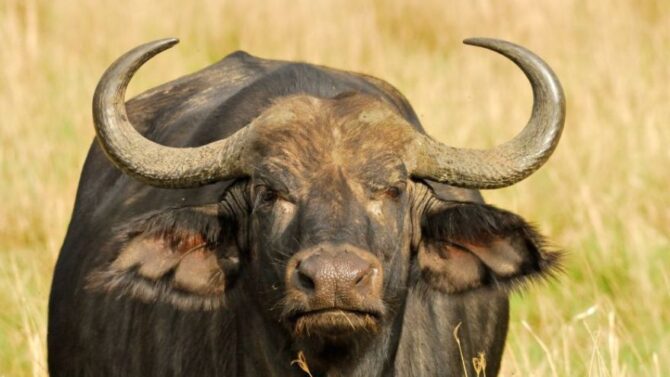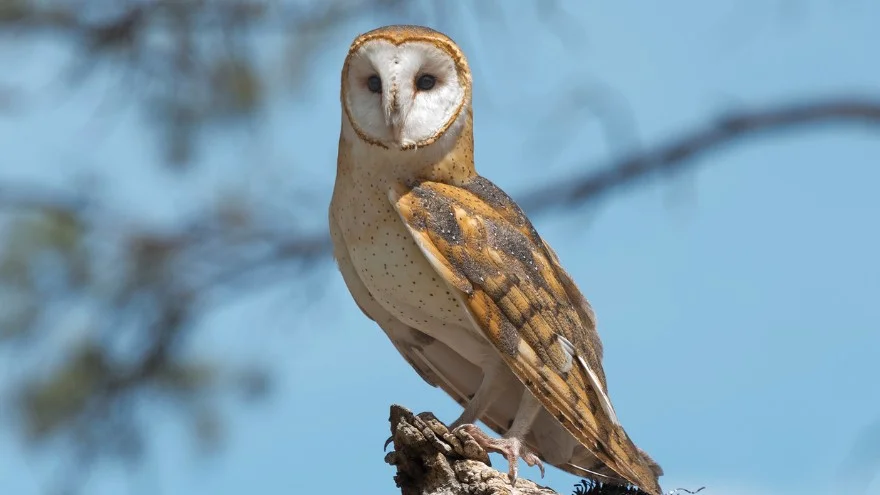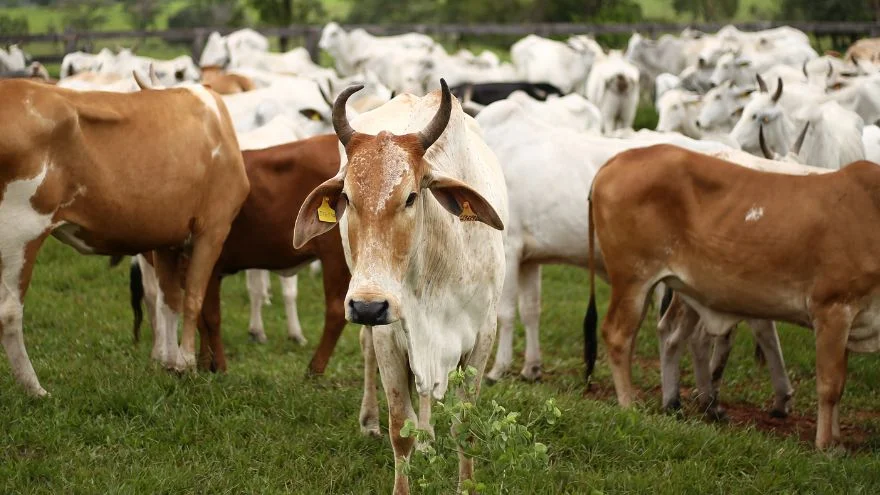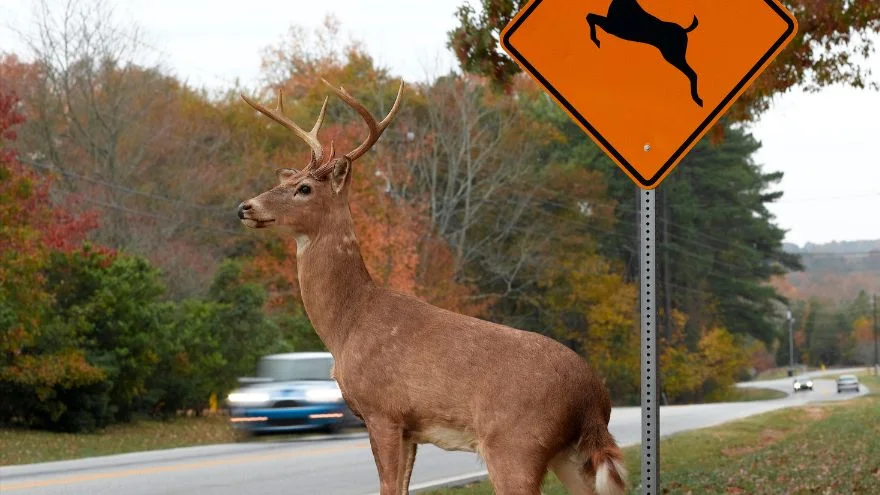Austria, a largely mountainous country, is diverse with its many natural habitats, from typical forests to dry grassland patches and rugged mountains.
These habitats provide a home for vast wildlife to thrive, which many environmentalists consider good and conservative.
But not all these animals are as friendly as they might appear. Deadly creatures also inhabit the European country.
The most dangerous animals in Austria that can easily snap life out of you include the wild boar, Eurasian brown bear, poisonous spiders, venomous snakes, etc., and you should take extra precautions.
This article looks extensively into 13 of Austria’s deadliest animals you should avoid, and safety tips for exploring wildlife in the area.
What are the Most Dangerous Animals in Austria
1. Eurasian Brown Bear
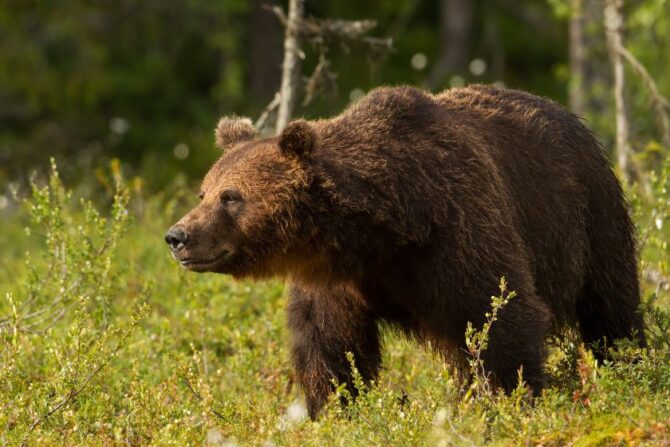
- Scientific name: Ursus arctos arctos
- Classification: Mammals
- Habitat: Wooded mountains, forests, caves
- Diet: Omnivores
- Conservation status: Least Concern
This specie of bear is commonly called the common brown bear or the European brown bear. It is a sub-species of the brown bear.
It has dense brown fur and a round head with a body weight that depends on its habitat. It has long claws on its paw.
They are dangerous because they have the potential to kill a person. Although encounters are rare, you wouldn’t want to experience a scuffle with this powerful animal.
Attacks usually happen when they feel threatened or attacked. Trying to feed or touch a Eurasian brown bear is a bad idea, do not try it.
2. Common Viper
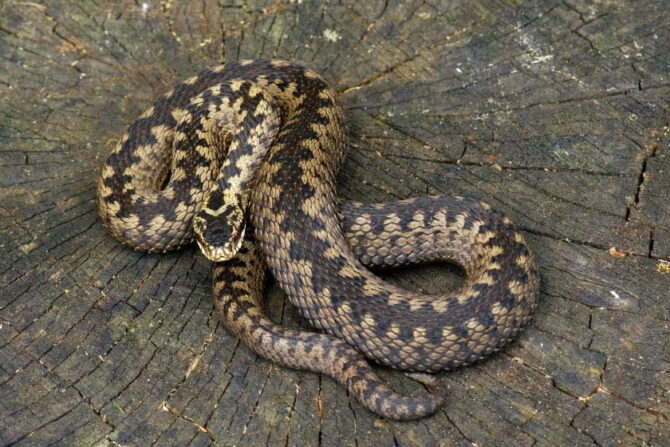
- Scientific name: Vipera berus
- Classification: Reptile
- Habitat: Meadows, woods, banks of lakes, and ponds
- Diet: Carnivore
- Conservation status: Least concern
The common viper, also called the common European adder, is most prevalent in central and eastern Europe and Asia.
They are solidarity animals, occasionally seen with mates during hibernation or breeding periods.
They are venomous, and their bite results in a sharp pain followed a moment later by swelling.
They are not usually aggressive but are rather timid; avoid trying to handle or step on them.
When they feel threatened, they turn the upper part of their body to an S-shape in anticipation of a strike. If bitten, seek medical help immediately.
3. Wild Boar
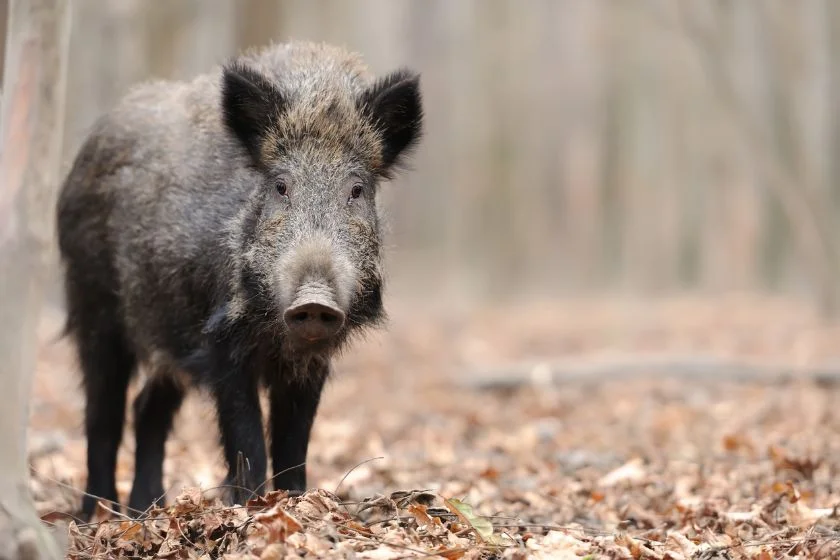
- Scientific name: Sus scrofa
- Classification: Mammal
- Habitat: Forests, marshy swamplands, shrublands
- Diet: Omnivores
- Conservation status: Least concern
The wild boar is the ancestor of the contemporary domesticated pig. Its natural habitat is extensive, spreading evenly across European forests, Asia, and the western part of North Africa.
They are swift runners and can swim quite well too.
They are dangerous because they are highly territorial and will attack humans that trespass into their habitat.
In 2017 the U.k. ambassador to Austria recounted his experience with this wild beast as terrifying after accidentally entering its territory.
They possess long, hard tusk, which they use to cause injury to victims during their attacks.
Also, due to their dirty nature, they typically carry germs, viruses, and diseases.
4. Nose-horned Viper
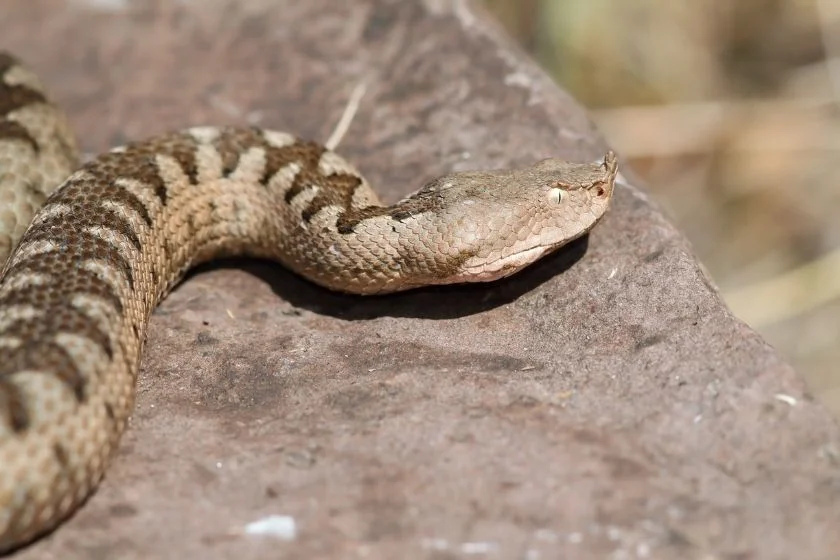
- Scientific name: Vipera ammodytes
- Classification: Reptiles
- Habitat: Farmlands, vineyards, Rocky hillsides
- Diet: Carnivore
- Conservation status: Least Concern
The nose-horned viper is common in southern Europe and found in south Austria. It enjoys staying in Rocky habitats.
The males are distinguished from the females by a V- marking behind their heads.
Being one of the most venomous snakes in Europe, research has also shown that its bite can still cause death even after receiving anti-venom.
Among all the European vipers, this specie is considered the most dangerous due to its very potent venom.
A bite usually leads to rapid pain, swelling, and discoloration. Despite this, they rarely bite except when provoked and are hardly aggressive.
Please do not pick them up in Austria; that could be a recipe for disaster.
5. Wolves

- Scientific name: Canis lupus
- Classification: Mammal
- Habitat: forests, woodlands, desert
- Diet: Carnivore
- Conservation status: Least Concern
Wolves are members of the Canidae family and are close relatives of the coyotes and the golden jackal. They are renowned for howling.
Though expatriated from Austria in the early 19th century, they have made appearances within the Austrian border.
Wolves are aggressive and are stressed by human presence due to their highly territorial nature. When provoked, they might attack by inflicting quick bites.
They also cause economic loss by preying on livestock like sheep, goats, cattle, and turkeys.
Moreover, these wild dogs are known to harbor viral diseases like rabies which you wouldn’t want to get infected with.
6. Eurasian Lynx

- Scientific name: Lynx lynx
- Classification: Mammal
- Habitat: Mountains, open forests, brushy spaces
- Diet: Carnivore
- Conservation status: Least Concern
Among the lynx species, the Eurasian lynx is the largest. Among the family of the wild cat, it is the most feral.
They have large pointed ears and round Iris with colors ranging from yellow-brown to green. They have stripes all over their bodies.
In as much as the Eurasian lynx looks graceful in its appearance, it can be potentially aggressive, and it is powerful.
Although they tend to avoid humans, they will indeed attack when cornered to defend themselves.
Be careful when hiking in Austria; the Eurasian lynx will attack if it feels threatened by your presence.
7. Coyotes
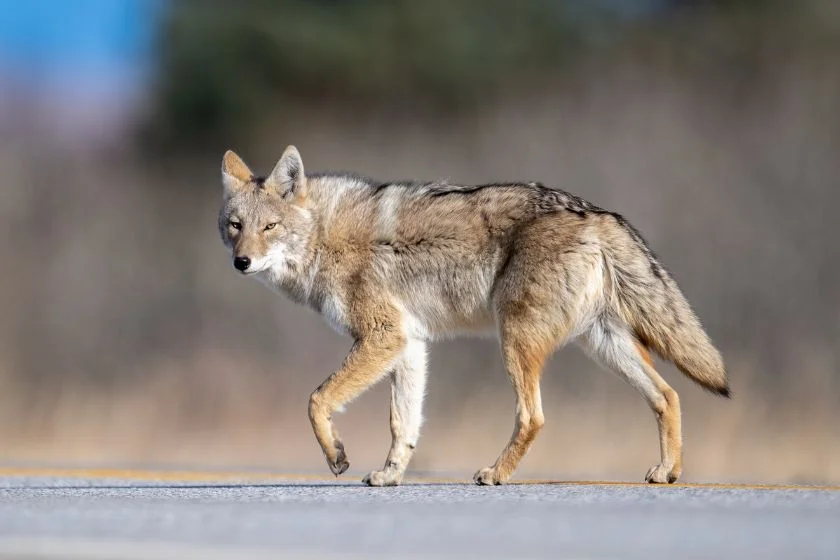
- Scientific name: Canis latrans
- Classification: Mammal
- Habitat: Mountains, forests, plains
- Diet: Carnivores
- Conservation status: Least concern
Coyotes are a species of Canine. In Austria, there have been several sightings of this animal.
They are called the prairie wolf or the brush wolf as they are close relatives of the wolves though relatively smaller.
Like dogs, they regulate their body temperature by panting heavily.
They are a threat to livestock and have no fear of humans. Stay away from them because they can bite you if they are hungry.
A bite from a coyote can infect you with rabies and other diseases.
8. Southern Black Widow Spider
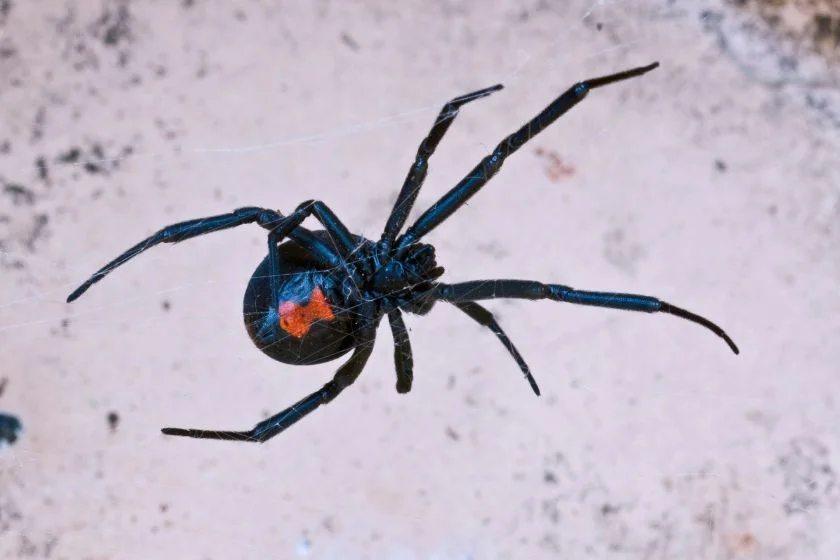
- Scientific name: Latrodectus mactans
- Classification: Arachnid
- Habitat: Rock piles, rodent burrows, hollow tree stumps
- Diet: Carnivore
- Conservation status: Least Concern
The black widow is also called the shoe-button spider. They usually thrive in temperate habitats but can be found on all continents apart from Antarctica.
The black male widow, unlike the female, doesn’t sting. The female black widow is distinct in appearance from the males, and they are notorious for feeding on the males after mating.
The black widow, though small, is not entirely harmless. Due to the neurotoxin contained in its venom, a sting can lead to respiratory problems, hypertension, and muscular pain.
Do not be careless with this arachnid when you see one.
9. Wolf Spider
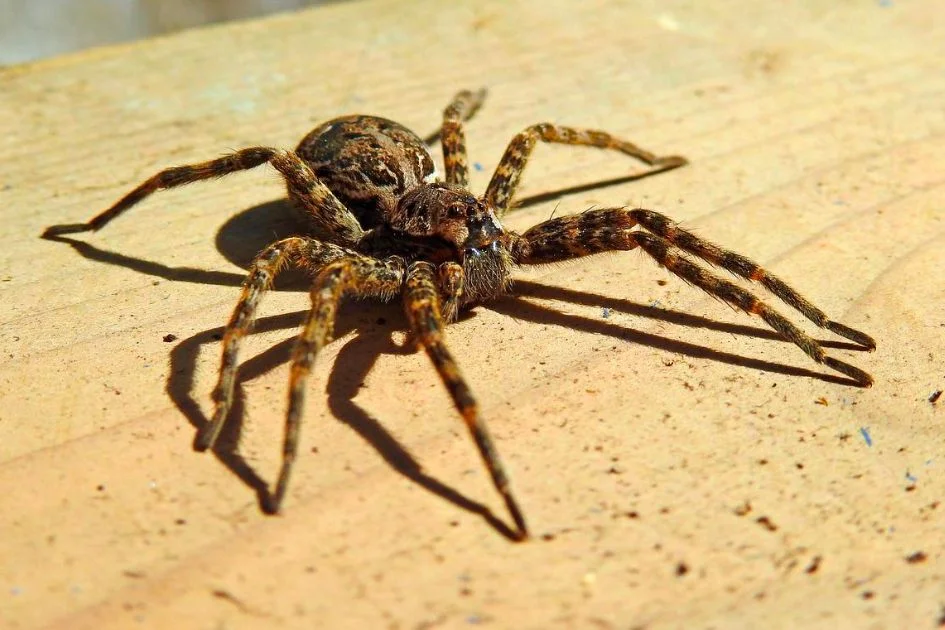
- Scientific name: Lycosidae
- Classification: Arachnid
- Habitat: wet Meadows, sheds, burrows, gardens
- Diet: Carnivore
- Conservation status: Least Concern
In Austria, wolf spiders are among the enormous spiders; however, unlike other species, they do not spin webs. Instead, they pounce on their prey or chase it over short distances.
Two of their eyes are large, and unlike other arachnids, they have superb vision. They are also very good at camouflaging themselves.
A wolf spider’s bite is painful and can cause itching, swelling, nausea, dizziness, and rapid pulse.
The pain, too, can take quite long before it subsidizes. When you see a wolf spider in Austria, do not be carried away by its eyes; let it be.
10. Ticks

- Scientific name: Ixodida
- Classification: Arachnid
- Habitat: woodpiles, stone walls, tall grass
- Diet: Parasitic
- Conservation status: Least Concern
Ticks are arachnids spread evenly worldwide, though they prefer warm and humid environments.
Hard ticks have a hard plate on their back, while soft ticks do not. Ticks can’t fly or jump; they can’t drop too; they reach out with their leg and crawl into a host.
Ticks, being Parasitic, feed on blood, and this can be bad if you are the host. They can transmit harmful diseases like Lyme disease and encephalitis(LBE).
Ticks infect around 700,000 people with Lyme disease each year.
Therefore don’t forget your Deet-based repellant when visiting Austria, and don’t forget to wear clothes that cover your entire body.
11. Orsini’s Viper

- Scientific name: Vipera Ursinii
- Classification: Reptile
- Habitat: Rocky habitats, sparse grasslands
- Diet: Carnivores
- Conservation status: Vulnerable
The Orsini’s viper, also called the meadow viper, is found in eastern Europe, with several subspecies recognized.
Coloration varies, ranging from grey to brown and also olive green. It has pupils that are vertically slit.
This specie of snake is highly sensitive to human activity. Though it rarely bites humans and is not aggressive, it can still strike when provoked.
A bite from this snake is not what you would want, considering it is a venomous snake.
It will choose to escape or remain still when it encounters a human. Don’t block its escape route.
12. Huntsman Spider
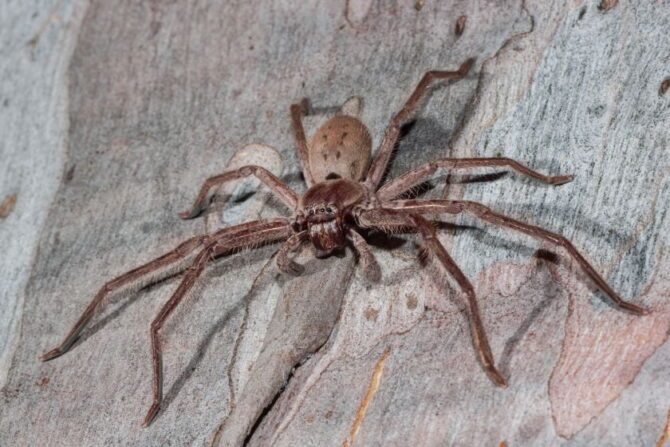
- Scientific name: Sparassidae
- Classification: Arachnid
- Habitat: Tree trunks, barks, walls
- Diet: Carnivores
- Conservation status: Least concern
Huntsman spiders are big spiders and almost have a crab-like appearance; because of that, they are commonly called giant crab spiders.
A large number of these spiders roam Austria. They have a preference for woody places.
They have furry textures, with the upper parts of their bodies having varying shades of brown or grey.
They are not generally aggressive and rarely confront humans, but their bites are painful and carry venom. Swelling usually occurs around the bitten area.
To reduce the flow of venom when bitten, remain calm and apply ice to mitigate the swelling. Panicking can cause a severe reaction.
13. Yellow Sack Spider
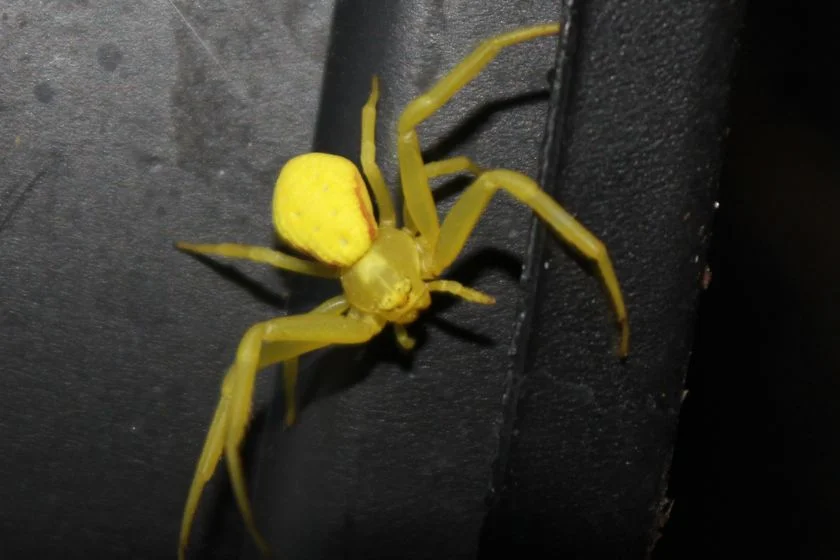
- Scientific name: Cheiracanthium punctorium
- Classification: Arachnid
- Habitat: Trees, debris, leaves, shrubs
- Diet: Carnivores
- Conservation status: Not evaluated
Yellow sac spiders are also called thorn fingers. They have orange-red underbellies and hang out in trees and greeneries during summer.
However, unlike other spider species, they do not spin webs. Instead, they build sacs.
Be careful with these spiders; they can bite, especially when squeezed accidentally or trapped in clothes.
Their venom is neurotoxic, and the pain intensity is likened to a wasp sting and can cause swelling or redness. Fever and nausea can result from more severe cases.
Austria Wildlife Safety Tips
There are rules to everything, and relating to the wildlife in Austria also has boundaries for your safety and theirs.
Ensure you follow these do’s and don’ts. They include:
- Do not feed the animals. Animals, when fed continuously by a human, could start associating humans with food. They might become aggressive when starving and encounter a human with no food to spare.
- Wear light clothing that covers your entire body to protect you from leeches and ticks. Wear hats too, and do not forget to carry your insect repellent with you
- Always watch your step. Snakes could be resting on top of rocks or open pathways. Stepping on them is a recipe for disaster; tap the ground with your walking stick to alert them; the noise will make them retreat.
- If a snake is slithering along your path, let it pass, do not try to block its path or kill it. It will perceive such an action as a threat and likely bite you.
- Do not just sit on any rock or log you see. Do a thorough inspection because something might just be creeping underneath. Remember not to inspect with your hand; use a stick instead.
- Avoid close encounters. Keep a very safe distance from these animals. Some of these animals don’t like when humans trespass into their territory. Getting too close can put you into trouble. Observe from a distance.
Frequently Asked Questions
What is the deadliest animal in Austria?
The most dangerous animal in Austria is the brown bear, built with strength and agility. They can weigh up to 882 lbs and have one of the meanest jabs compared to any other animal.
Are there venomous spiders in Austria?
Yes, the yellow sack spider is one of the most venomous spiders in Austria, with aching bites that can cause headaches, vomiting, and even death if not treated.
Are there tigers in Austria?
There are tigers in Austria, which is home to one of the world’s rarest tigers, the white tiger. They currently reside in the zoo in Austria from predators and poachers because they cannot camouflage in the wild due to their radiating white skin.
Are there poisonous snakes in Austria?
Some of the venomous snakes that range in Austria include the nose-horned viper (Vipera ammodytes) found in Carinthia and southern Styria, common viper (Vipera berus) found across Austria, and Orsini’s viper (Vipera Ursinii) found in Lower Austria.
Conclusion
Some wildlife has a bad reputation due to our inability to understand nature. These most dangerous animals in Austria play critical ecological roles.
They might misinterpret your kindness as an attack; therefore, keep your distance from them as much as possible.
Next Up…
Discover the most dangerous animals in Europe:


